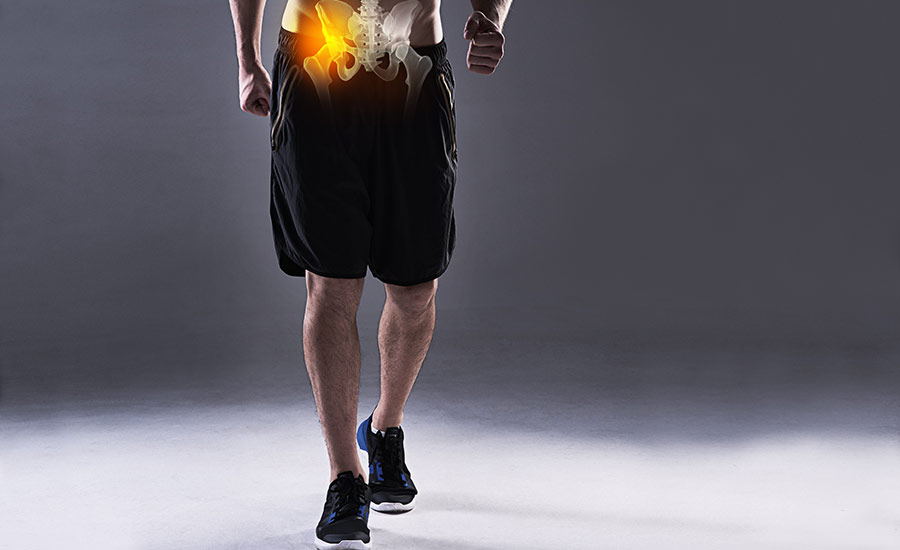
What Is Tommy John Surgery?

Meet Our Elbow Surgery Specialists
Find a Specialist Near You
Get the care you deserve close to home at one of our New Jersey or New York Locations.
About Tommy John Surgery

Who Might Need Tommy John Surgery?
Tommy John surgery is a procedure typically recommended for athletes or laborers who suffered a UCL tear.
It may also be recommended for individuals who have suffered a traumatic elbow injury or have a degenerative elbow condition.
Tommy John surgery candidates can include:
- Baseball players: Baseball pitchers and other players who perform repetitive overhead throws can put a lot of stress on their elbow, which can result in a UCL tear.
- Tennis players: Tennis players may experience an UCL tear from simply playing the sport since a lot of elbow movement and hitting the ball puts a lot of stress on the elbow joint
- Other athletes: Athletes who participate in sports that involve a lot of throwing, such as football or javelin throwing, can develop UCL tears.
- Laborers: People who have jobs that involve repetitive arm motions, such as construction workers, mechanics or painters, can develop UCL tears.
- Trauma: UCL tears can occur as a result of trauma to the elbow, such as a fall or a car accident.
- Genetics: Some people may be more prone to UCL tears due to genetic factors.
If you are suffering from a UCL tear or elbow injury, our specialists at OrthoEast will evaluate your physical condition, symptoms and medical history to determine whether you are a candidate for Tommy John surgery.
Our Tommy John surgery specialists at OrthoEast include Dr. Scillia, and Dr. Casey Pierce.
In addition to Tommy John surgery, our physicians are also experts in fields such as minimally invasive spine surgery, knee replacement surgery, or various arthroscopy procedures.
Our team is board-certified and fellowship-trained, which allows us to provide comprehensive care to each and every patient, answering questions, increasing comfort and putting your mind at ease every step of the way.
Symptoms & Conditions That Might Require Tommy John Surgery
Tommy John surgery is typically performed to address a torn ulnar collateral ligament in the elbow.
Symptoms of a UCL tear may include:
- Pain on the inside of the elbow
- Decreased throwing velocity or accuracy
- Numbness or tingling in the hand or fingers
- Swelling or stiffness in the elbow
- Difficulty straightening the arm
Other conditions that may be treated with Tommy John surgery include:
The UCL, or ulnar collateral ligament, is a major ligament located on the inner side of the elbow. When this ligament is sprained or torn, it can cause significant pain and instability in the elbow joint.
Symptoms of a UCL sprain or tear may include pain on the inside of the elbow, a decrease in throwing velocity or accuracy for athletes, and a feeling of instability in the joint.
In many cases, Tommy John surgery may be necessary to repair or reconstruct the damaged ligament.
It’s important to note that not all individuals with a UCL tear will need Tommy John surgery, and the decision to undergo the procedure depends on if conservative treatments such as rest, physical therapy, and anti-inflammatory are not helping.
Chronic elbow pain is a common symptom of a variety of elbow conditions, including UCL sprains or tears, osteoarthritis, and tendinitis. If conservative treatments such as rest, physical therapy, and medication do not alleviate the pain, Tommy John surgery may be recommended.
Athletes who experience a significant decrease in performance, such as a loss of velocity or accuracy in their throws, may be experiencing an underlying elbow condition that requires Tommy John surgery.
Non-athletes can also experience a decrease in the performance of their elbow mobility — due to a work-related injury, for example. Constructions workers, mechanics and others who use power tools to engage in repetitive lifting may also be at risk of an elbow injury.
Tommy John surgery can help restore performance in a wide range of cases.
In some cases, conservative treatments and non-operative care may not be enough to effectively treat an elbow injury.
If these treatments fail to provide relief, Tommy John surgery may be necessary to repair or reconstruct the damaged ligament or tissue.
How Is Tommy John Surgery Performed?
Tommy John surgery is typically performed as an outpatient procedure, which means you can go home on the same day of your surgery. During the procedure, you will be asleep as the surgery is carried out using general anesthesia.
There are two types of Tommy John surgery: traditional and modified.
To perform traditional Tommy John surgery, your physician will make an incision on the inside of your elbow to access the damaged UCL.
Once the UCL is exposed, we will drill small holes into the bones of your upper and lower arm to create tunnels.
The tendon graft, which is typically taken from your forearm or hamstring, is then threaded through the tunnels and secured to the bones using sutures or screws.
After the graft is secured, your surgeon will close the incision and place a brace or splint on the affected elbow to immobilize it and promote proper healing. In some cases, the surgeon may also perform additional procedures, such as removing damaged tissue or bone spurs, during the surgery.
Modified Tommy John Surgery, also known as the “docking technique,” is a variation of the traditional Tommy John Surgery that aims to reduce the surgical trauma to the elbow and potentially speed up the recovery time.
To perform modified Tommy John surgery, we make a smaller incision in the elbow and use a smaller graft.
Instead of removing the entire damaged UCL, we leave a portion of the ligament intact and reattach the new graft to it, creating a “docking” effect. This allows for a stronger and more stable repair while preserving more of the natural structure of the elbow.
After both types of Tommy John surgery, we will recommend a rehabilitation program that includes physical therapy to gradually restore strength and range of motion to the elbow.
How To Prepare For Tommy John Surgery
Before the surgery, you will need to undergo a physical examination and various imaging tests to determine the extent of your injury and whether surgery is necessary.
Here are a few things to have in mind before the surgery:
- Consult with our team: To ensure a successful surgery and a smooth recovery, it’s essential to have a complete understanding of the benefits, risks, and post-operative requirements. Our team at OrthoEast is available to answer any questions you may have and guide you through every step of the process, from pre-surgery to post-surgery.
- Quit smoking and avoid alcohol: Smoking and alcohol can both interfere with the healing process and increase the risk of complications. It’s best to quit smoking and avoid alcohol for several weeks before and after the surgery.
- Follow pre-operative instructions: We will provide you with specific instructions on what to do before the surgery, such as fasting or taking certain medications. It’s important to follow these instructions carefully to ensure that the surgery goes smoothly.
- Plan for post-operative recovery: Tommy John surgery requires a period of recovery and rehabilitation. Make sure you have someone to help you with daily tasks during this time and you arrange for any necessary time off work.
- Be mentally prepared: Surgery can be a stressful experience, so it’s important to take care of your mental health as well. Practice relaxation techniques such as meditation or deep breathing, and make sure you have a support system in place to help you through the process.
How Long Does Tommy John Surgery Take?
On average, the surgery takes approximately one to two hours to complete. However, the exact duration may vary depending on the complexity of the case.
Before the surgery we will have a consultation so you can get a better idea of what to expect.
What To Expect After Tommy John Surgery
After the surgery, you may experience pain and swelling in the elbow area. You will also need to wear a brace or cast to keep your elbow immobilized during the initial recovery period.
It is completely normal to have a limited range of motion after the surgery, as you’ll need several weeks to gradually return to normal activities.
It may take a few months to return to more intense activities, such as sports or heavy lifting. It’s important to stay in communication with our specialists at OrthoEast so you can avoid re-injury and stay on top of your recovery.
Physical therapy may also be recommended to help you regain strength and mobility in your elbow, and avoid revision surgery, which only occurs at a very low rate.
Tommy John Surgery Recovery Time
The recovery time for the surgery can vary depending on the extent of the injury and the type of surgery performed.
In general, most patients need to wear braces or cast for a period of 4-6 weeks after surgery.
Here are some tools and equipment that may be useful in aiding recovery:
- Ice packs or cold therapy device to reduce swelling and pain in the affected elbow.
- A sling or arm immobilizer to keep the affected arm in a comfortable and stable position during the early stages of recovery.
- Grip strengthening tools such as a hand grip or therapy putty, to help rebuild grip strength in the affected hand and arm.
- Range of motion exercise tools such as a therapy ball or resistance band, to aid in stretching and improving flexibility in the affected arm.
- Foam roller or massage tools to help relieve muscle tension and improve blood flow to the affected area.
- A comfortable and supportive pillow to help elevate the affected arm while sleeping, which can reduce swelling and promote healing.
- A designated physical therapy space such as a therapy table and exercise mat, to facilitate proper rehabilitation and exercises prescribed by our OrthoEast team.
The total recovery time can range from several months to a year or more, depending on your exact situation. It is important to follow all post-surgery instructions provided by your surgeon to ensure a successful recovery.
Schedule a Consultation for Tommy John Surgery at OrthoEast
We know that the thought of a surgical procedure can be scary, and reading through all this information at once can be a bit much. That’s why our compassionate team at OrthoEast offers personalized care every step of the way, to answer your questions and put your mind at ease.
Find us at one of our locations in New Jersey or New York to schedule a consultation:
- Wayne, NJ
- Morristown, NJ
- Clifton, NJ
- Linden, NJ
- Wall Township, NJ
- New York, NY










